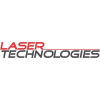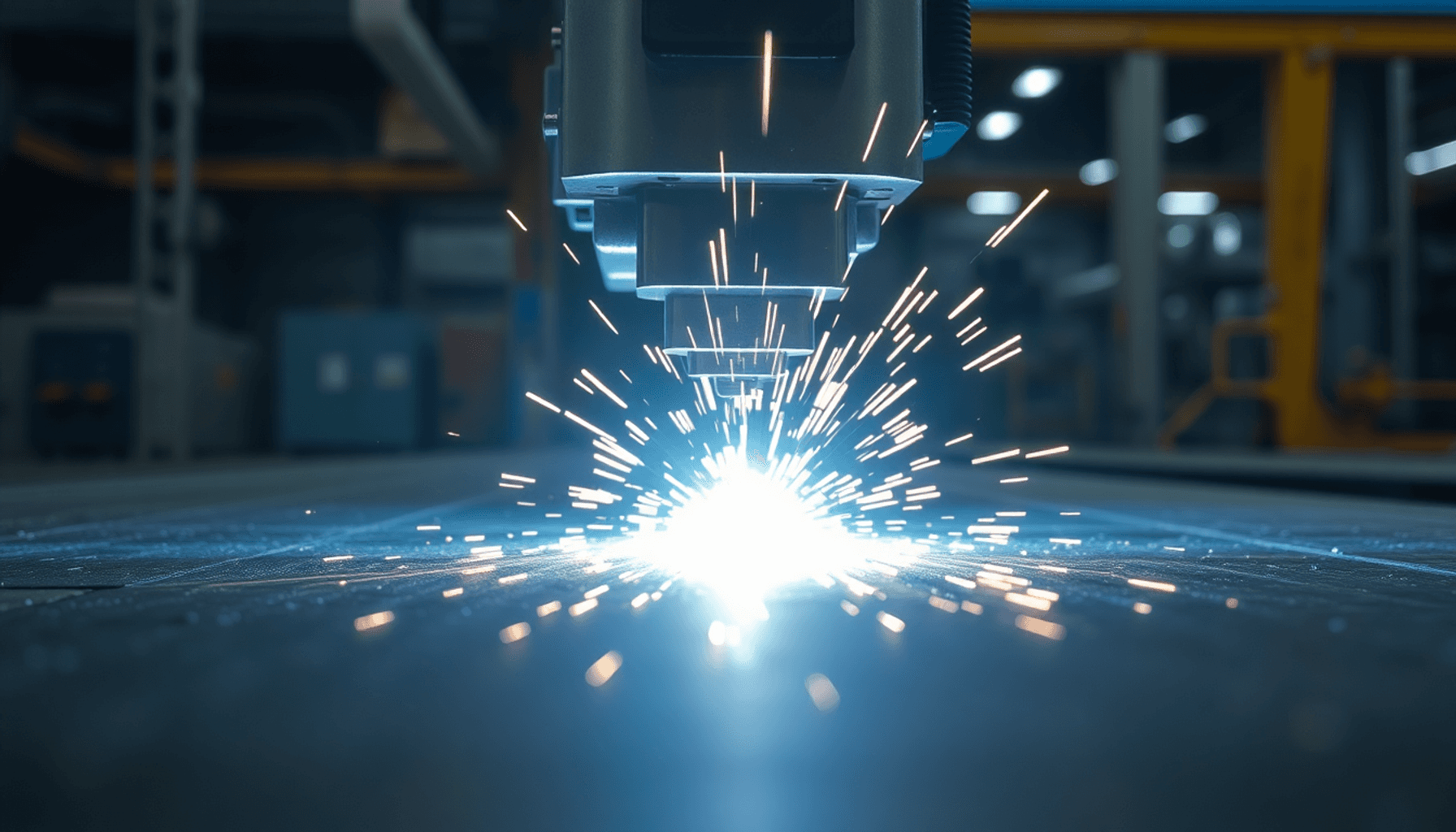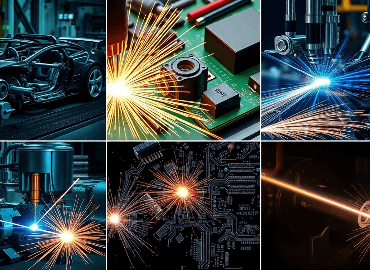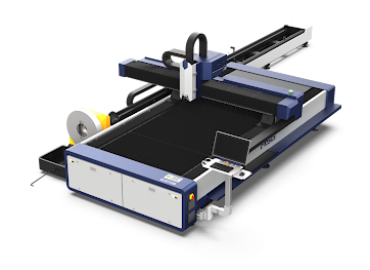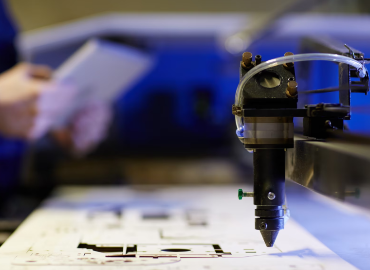In today's world, laser technology is a key driver of industrial growth. This cutting-edge technology finds applications in various fields, including precise cutting and engraving. However, alongside its numerous uses, laser applications also bring forth specific challenges such as safety issues and environmental impact.
Initially created by Theodore Maiman, laser technology has evolved into a crucial component across multiple industries. It offers innovative solutions like 3-D prototyping and UV laser marking machines.
As we delve into the complexities of laser technology, it's important to grasp both its advantages and the potential obstacles it may present. Whether you're interested in learning about laser technology programs or contemplating its integration into your business, understanding these aspects is vital for achieving success.
What is Laser Technology?
Laser technology involves using light to perform various functions like cutting, engraving, measuring, and communication. The word "laser" stands for Light Amplification by Stimulated Emission of Radiation. In simple terms, lasers produce highly focused beams of light that are consistent in color (monochromatic) and direction (collimated).
How Lasers Work
Lasers differ from regular light sources in that they concentrate light into a powerful beam, enabling applications requiring precision and high energy density. This unique combination of properties—known as laser beam characteristics—makes laser technology incredibly versatile across many industries.
Key Contributors to Laser Technology
One notable aspect of the development of laser technology is the work of pioneers Charles H. Townes and Arthur Leonard Schawlow, who contributed significantly to its inception.
Applications of Laser Technology
Laser applications in industry are vast; for instance, laser-cutting equipment is commonly used in manufacturing processes that demand high precision and speed. Additionally, specialized tools like laser soldering machines are essential in electronics manufacturing for their accuracy and efficiency.
If you're interested in pursuing a career as a Manufacturing Technician or simply want to expand your knowledge, you can find educational courses on lasers and photonics that cover these topics in depth.
Applications of Laser Technology
Lasers are being used in many industries to improve processes and create new opportunities. Here are some of the main areas where laser solutions are making a difference:
1. Healthcare
In the medical field, lasers are used for:
- Precise surgeries
- Non-invasive treatments
- Diagnostic tools
These applications have transformed patient care and improved outcomes.
2. Manufacturing
Lasers play a crucial role in manufacturing by:
- Cutting materials with exceptional accuracy
- Engraving designs on various surfaces
- Performing quality inspections
With fiber lasers, manufacturers can achieve higher productivity and flexibility in their operations.
3. Telecommunications
In telecommunications, lasers enable:
- High-speed data transmission
- Fiber optic communication systems
This technology has revolutionized internet connectivity and communication networks.
4. Entertainment
Lasers are also widely used in the entertainment industry for:
- Concerts and events lighting
- Special effects in movies and shows
They create stunning visual displays that enhance the overall experience.
5. Research and Development
In research laboratories, lasers are employed for:
- Spectroscopy studies
- Material characterization
- Quantum physics experiments
These applications contribute to scientific advancements and technological innovations.
As we explore these applications further, it becomes evident that laser systems not only improve efficiency but also drive innovation across multiple industries.
1. Laser Cutting
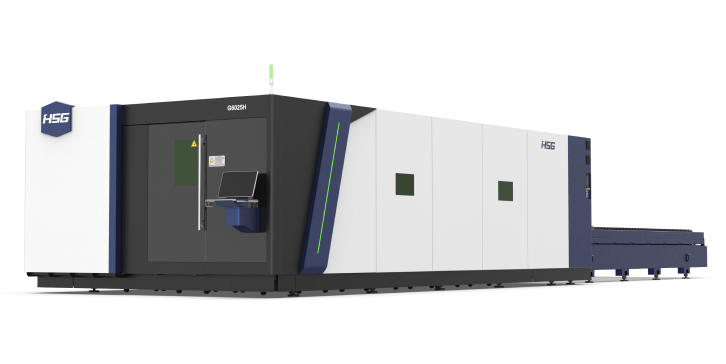
Laser cutting is one of the most common uses of laser technology. It involves using a high-powered laser beam to cut through various materials for laser cutting, including metals, plastics, wood, and ceramics. This process is valued for its ability to create intricate designs and precise cuts.
Laser Technologies provides advanced Laser Cutting Machines that offer exceptional accuracy for industries needing high-quality, complex tube cuts. The Universal Tube Laser Cutting Machine R2 is an advanced solution for businesses looking to efficiently cut various tubes and profiles. For smaller applications, the Tiny Tube Laser Cutting Machine R1 offers a compact design tailored for tiny tubes. This precision micro-cutting machine is space-efficient, easy to maintain, and ideal for small workshops or operations with limited space.
Whether you're an Opto-Mechanical Technician seeking advanced cutting solutions or looking to explore curriculum for laser technology degrees and certificates, Laser Technologies has the expertise and equipment to meet your needs.
2. Laser Welding
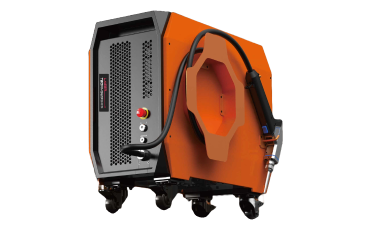
Laser welding is a high-precision technique used in various industries, including the aerospace, automotive, and electronics sectors. This method utilizes a focused heat source to provide an intense and precise application of heat, enabling highly accurate welding that minimizes the impact on surrounding materials. Laser Welding is particularly beneficial in applications where high-quality, clean welds are essential or where the components being joined are delicate.
The Smartweld handheld system is an innovative solution that offers cost-effective welding with faster writing speeds. This makes it easy to operate and helps welders save time and resources annually, resulting in smoother welding seams. This machine is suitable for a wide range of applications, from basic uses of laser technology in industry to the most advanced processes in manufacturing.
For those looking to expand their expertise, exploring programs that allow you to discover skills taught in laser technology programs can be invaluable. Additionally, understanding different types of lasers, such as the Helium–neon laser and fiber laser engraving machines, can enhance your capabilities within these dynamic industries.
3. Laser Engraving and Marking
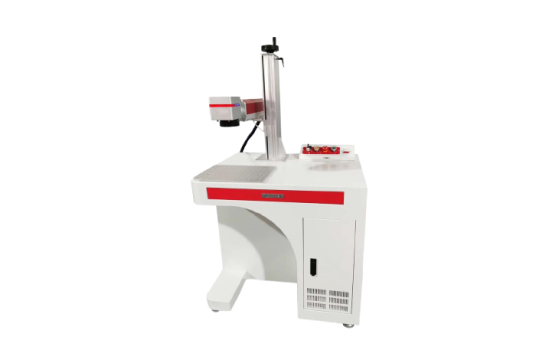
Laser engraving and marking are essential processes for creating permanent designs such as logos or text on various products. These techniques are commonly used in industrial branding, product identification, and consumer personalization. The advantage of laser engraving is that it utilizes advanced laser technology to engrave without physical contact, ensuring that there is no wear on the material surface during the process. Additionally, the designs created are highly durable and resistant to fading.
Fiber Laser Marking Machines offer efficient and precise solutions for marking different materials. By employing cutting-edge fiber laser technology and sophisticated beam control, these machines deliver high performance across various applications. Whether you're looking to enhance brand visibility through industrial branding or customize products for individual buyers, laser engraving and marking provide versatile options that meet diverse needs.
For those interested in mastering these techniques, it's essential to know the prerequisites for laser technology courses that cover fundamental concepts like population inversion and optical resonators. Additionally, integrating tools such as a 3D laser scanner can further streamline the process of creating intricate designs tailored to specific requirements.
Challenges in Laser Technology
While laser technology has many uses, it still faces some challenges, especially when it comes to laser cutting machines in India. Here are some of the main challenges:
- High costs: The initial investment for laser machines can be quite expensive.
- Material limitations: There are certain materials that may not be suitable for laser cutting.
- Need for specialized training: Operating advanced laser systems requires specific skills and knowledge.
Safety is also a major concern when using powerful tools like handheld laser welding machines. It's important to follow safety protocols strictly to prevent accidents. Regular maintenance and calibration of the equipment are necessary to keep it working well and ensure its lifespan.
For anyone interested in this field, it's essential to understand how lasers work and the function of components like the laser oscillator. If you're new to this technology, it's recommended to look for hands-on training opportunities with laser systems. This practical experience will help you overcome these challenges and become proficient in operating lasers.
1. High Initial Investment in Laser Systems
Laser systems, especially industrial machines like laser welding machines, can have a high initial investment. This cost can be prohibitive for small businesses or startups. However, the long-term benefits of laser technology, such as improved precision and efficiency, often outweigh the initial investment.
Investing in these advanced systems allows companies to take advantage of Coherence (spatial and temporal) in applications like optical communication and lithography. While the upfront costs may be significant, the enhanced capabilities offered by these technologies—such as those seen in photolithography processes—can lead to greater productivity and quality in the long run.
Additionally, conducting thorough laser performance tests before purchasing can help ensure that the selected system meets specific needs effectively. Ultimately, while the high initial investment in laser systems may deter some, the enduring advantages they provide make them a worthwhile consideration for any forward-thinking business.
2. Material Limitations in Laser Cutting
While lasers are highly effective for cutting a range of materials, not all materials are suitable for laser cutting due to specific material limitations in laser cutting. Reflective materials like copper and brass can cause laser beams to scatter, reducing cutting efficiency. This scattering effect is particularly pronounced with reflective materials like copper and brass, which can interfere with the precision of the process. However, technological advancements in laser materials processing are continually expanding the range of materials that can be effectively processed with lasers.
3. Training and Expertise in Laser Operation
Laser machines often require specialized knowledge to operate effectively. Operators need to be trained in how to handle the equipment, maintain it, and troubleshoot any issues that may arise. This includes understanding the intricacies of laser design components and the various laser pumping methods such as electric current applications. Companies must invest in training to ensure that their staff can utilize the full potential of laser technology, particularly in areas like selective laser sintering and managing optical feedback in lasers.
4. Safety Concerns
Safety concerns in laser technology are crucial because lasers produce powerful beams of light. If these beams are not handled correctly, they can cause serious harm. That's why it's important to have protective measures in place for laser operators, such as shields and proper machine enclosures, to ensure the safety of workers.
Manufacturers must follow strict safety standards when making lasers to avoid accidents. This means understanding the difference between stimulated and spontaneous emission and making sure that equipment like laser welding machines meets established safety criteria. Additionally, factors like spatial coherence and beam focusing in lasers are important for maintaining a safe working environment.
When buying equipment like a laser welding machine, it's important to consider not just the cost but also the safety features built into the technology.
5. Maintenance and Calibration
Like all high-tech equipment, the maintenance and calibration of laser systems are essential to maintaining their performance and precision. Regular maintenance schedules are crucial, especially in industries where machine downtime in high-demand operations can be particularly disruptive.
Understanding the intricacies of laser technology is vital; for instance, it's important to know the difference between stimulated and spontaneous emission in lasers when considering their upkeep. Advanced laser technology courses often cover these fundamental concepts alongside various applications of lasers in industry, medicine, and communication.
Additionally, factors such as low divergence play a significant role in the effectiveness of laser systems, making proper calibration even more critical. As you explore the complexities of laser operation, you might also find yourself comparing an optical oscillator vs optical amplifier in lasers to determine the best setup for your specific needs.
If you're interested in practical applications, consider how different types of lasers—like those used in small laser welding machines—vary in price and functionality based on their maintenance requirements. And for a deeper understanding of the physics behind coherent light production, discover how lasers produce coherent light and the principles that govern their operation.
Why Choose Laser Technologies?
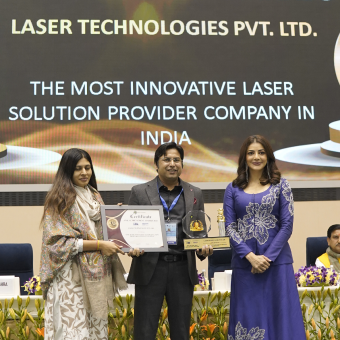
Laser Technologies is a trusted partner for businesses seeking to incorporate laser-cutting solutions into their operations. We prioritize quality and innovation in laser technology, offering products that meet the demands of modern manufacturing industries.
Here's why you should choose us:
- Expertise: Our team has extensive knowledge and experience in laser technology, allowing us to provide tailored solutions for various applications.
- Cutting-edge Products: We stay at the forefront of the industry by continuously improving our offerings and incorporating the latest advancements in laser technology.
- Customer Satisfaction: We are committed to understanding your unique requirements and delivering solutions that exceed your expectations.
Whether you need precise laser metal cutting machines or specialized training in laser system operation, we have the resources and expertise to support you. Our solutions are designed to enhance efficiency and accuracy in your processes, ultimately driving success for your business.
Choose Laser Technologies as your partner for top-quality laser cutting solutions that empower your operations.
1. Innovative Solutions
Laser Technologies offers innovative laser solutions with machines like the universal tube laser cutting machine R2 and the tiny tube laser cutting machine R1. These high-precision cutting solutions are designed to meet the demands of industries requiring meticulous tube processing. Both machines provide versatile, reliable, and efficient options, ensuring that customers benefit from the best-in-class technology in laser technology.
If you're interested in understanding more about the fundamentals of laser technology, you can explore topics such as:
- The history and inventors of the laser device
- Key components involved in laser construction and function
- Essential laser beam properties like coherence and wavelength
Additionally, for specific applications in metalworking, consider how a laser marking machine for metal can enhance precision and efficiency in your projects.
2. Excellent After-Sales Support
Laser Technologies is dedicated to making sure that customers get the most out of their laser machines by providing excellent after-sales support. Their team of experts is always available to help with any technical issues or maintenance needs, ensuring that your machines are always operating at their best.
Whether you need help installing and training on your machine or require ongoing maintenance, Laser Technologies is committed to making sure that every customer gets the full value from their investment. This level of support is crucial for anyone looking to become proficient in advanced laser technology, such as fiber laser cutting machines.
In addition, customers can also benefit from the specialized knowledge offered by industry experts like Dr. Norman Hodgson and institutions such as San José City College, which provide valuable photonics courses and laser technology certificates.
3. Customisation and Flexibility
Laser Technologies understands that different industries have unique needs. They offer tailored laser-cutting solutions that can be adapted to specific requirements, ensuring customisation and flexibility in laser solutions.
Whether you’re cutting small or large tubes or need specialized configurations for industries such as Industrial Electronics or Optics, Laser Technologies works closely with customers to provide personalized solutions. Their expertise extends to various applications, including the use of CO2 laser machines for intricate designs and processing materials with diverse properties.
Conclusion
Laser technology is essential in various industries, especially for precision cutting. Laser-cutting machines are crucial for businesses to succeed in the competitive manufacturing industry.
Machines like those from Laser Technologies not only improve efficiency but also deliver top-notch results with their precise laser beams. When customers choose Laser Technologies, they can expect dependable support that ensures optimal machine performance over time.
For anyone interested in these advanced tools, it's important to grasp the basic concepts of laser technology and how it works. Furthermore, aspiring laser application technicians should familiarize themselves with different types of laser gain mediums, including gas lasers, to effectively operate industrial laser cutters in various applications.
FAQs (Frequently Asked Questions)
What are the primary uses of laser technology in industrial applications?
Laser technology is widely used for cutting, engraving, measuring, and communication. It produces coherent, monochromatic, and collimated beams that enable precision in processes such as laser cutting of metals, plastics, wood, and ceramics; laser welding in aerospace, automotive, and electronics industries; as well as laser engraving and marking for industrial branding and product identification.
What types of laser cutting machines does Laser Technologies offer?
Laser Technologies offers advanced laser cutting machines including the Universal Tube Laser Cutting Machine R2 designed for efficient cutting of tubes and profiles, and the Tiny Tube Laser Cutting Machine R1 which specializes in precision micro-cutting applications.
How does Laser Technologies support customers after purchase?
Laser Technologies ensures customers maximize their laser machine use by providing superior after-sales support such as technical assistance, troubleshooting, maintenance services, installation, training sessions, and regular servicing to maintain optimal machine performance.
What are some challenges associated with using laser technology?
Key challenges include high initial investment costs, material limitations especially with reflective materials, requirements for specialized training and expertise to operate equipment safely and effectively, safety concerns necessitating protective measures, as well as ongoing maintenance and calibration needs.
Why should businesses choose Laser Technologies for their laser cutting and welding needs?
Businesses benefit from Laser Technologies' innovative solutions like the Universal Tube Laser Cutting Machines R2/R1 that provide customization and flexibility tailored to specific industry requirements. Additionally, the company offers reliable long-term performance support and comprehensive after-sales services to help companies stay competitive in manufacturing.
What customizable solutions does Laser Technologies provide for laser cutting?
Laser Technologies offers customizable laser-cutting solutions tailored to meet specific industry needs including small or large tube cutting capabilities and specialized machine configurations. This flexibility allows businesses to optimize their manufacturing processes with precision cutting suited to their unique applications.
